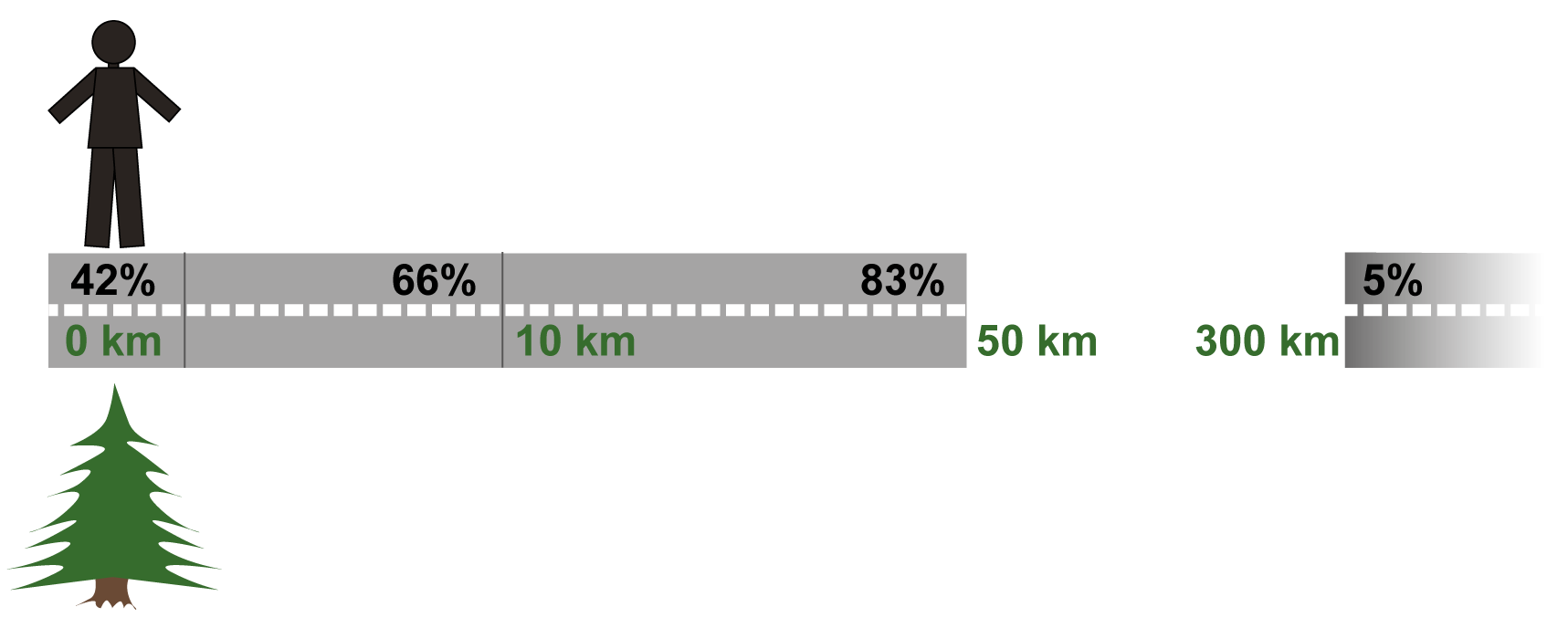The typical forest owner lives in the same municipality where his/her forest property is located, has no more moves planned, and is a bit older than the general population. The new forest owner tends to be a younger woman, with a higher income and education.
In Sweden, half of the forest owned by private owners is found in municipalities where 6% of the population lives. In 2012, 71% of all private forest owners lived in the same municipality where their forest property was located; 42% lived on their forest property, 65% less than 10 km from the property, and 83% within 50 km of it. Only 5% lived more than 300 km from their property. The average distance between owner and property was 60 km. The average property size was 34 ha, and the average length of ownership time was 20 years.
More women among new forest owners
Percent-wise, forest owners move less than the population in general, but this is due greatly to the fact that 75% of forest owners are at an age at which the most common moves – for education, for social reasons, and to the suburbs for life with young children – have already occurred. Forest owners are namely older than the general population: in 2012 their average age was 58 years, which is nearly 18 years older than the average for the entire population. In the general population 51% are under 40, while among forest owners this figure is 11%. New forest owners, who have often inherited their forest, are slightly younger than the group overall, 48 years, and live farther from their property than those who have owned forest a longer time. New owners often have a higher income, due greatly to the fact that they often have a higher education level and live in the city. Of the new forest owners, 46% are women; this figure for all forest owners is 37%, which likely means that the gender spread will eventually come to reflect the overall society. However, large properties are a man’s arena: women more often own a smaller property and live some distance from it, and it is administrated by someone else.
The forest owner changes, but not the forest management
Even though the forest owner is slowly changing, the desire to engage or felling activities is not declining. The changes to forest owners may be occurring slowly but surely, but this does not seem to pose any threat whatsoever to the production of timber. Whether owners live on their property (resident, Swe åbo, average 6 km to property) or some distance from it (non-resident, Swe utbo, average 181 km to property), they manage their forest virtually the same.
Facts
Gun Lidestav, Camilla Thellbro, Per Sandström, Torgny Lind, Einar Holm, Olof Olsson, Kerstin Westin, Heimo Karppinen, Andrej Ficko (2017), “Interactions between forest owners and their forests” in: Globalisation and Change in Forest Ownership and Forest Use. Natural Resource Management in Transition. Ed. by E. Carina H. Keskitalo. London: Palgrave Macmillan UK.
The study was conducted within the framework of PLURAL, a project financed by FORMAS “Starka forskningsmiljöer” 2012-2017.

